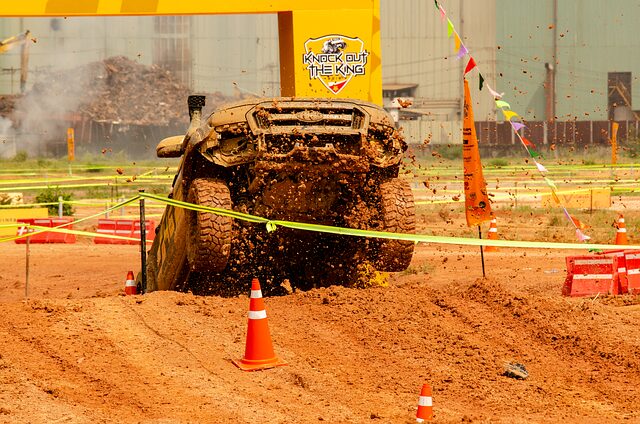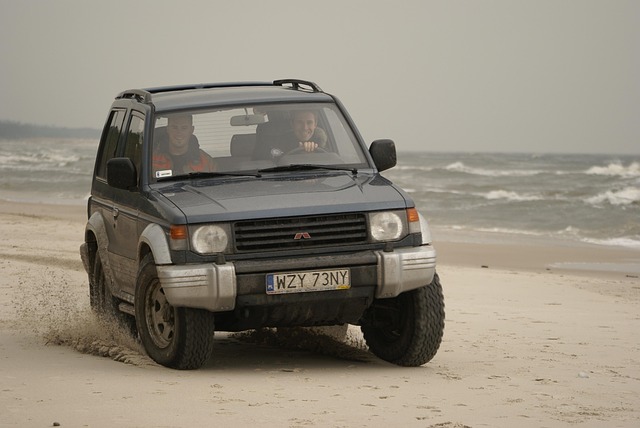McAllen's top 4×4 repair experts emphasize the importance of receiver hitches for off-road and hauling needs. They guide users on selection, installation, maintenance, and safety best practices, offering solutions to common issues like wiring wear and faulty connectors. Experts recommend consulting vehicle manuals for compatibility, considering hitch classes (I, II, III) based on towing capacity and use, and following safe towing guidelines for worry-free adventures.
“Unleash the full potential of your vehicle with receiver hitches – a must-have accessory for those who love outdoor adventures. This comprehensive guide, authored by McCallen’s top 4×4 repair experts, takes you on a journey through everything you need to know. From understanding the basics to expert installation tips, common issue fixes, and safe towing best practices, we’ve got you covered. Discover how to choose the perfect hitch for your vehicle and enhance your off-road experiences.”
- Understanding Receiver Hitches: A Basic Guide
- MCallen's Top Tips for Hitch Installation
- Common Issues & Quick Fix Solutions
- Best Practices for Safe Towing
- Choosing the Right Hitch for Your Vehicle
Understanding Receiver Hitches: A Basic Guide

Receiver hitches are a crucial component for anyone with a vehicle designed for off-road adventures or hauling heavy loads. This basic guide aims to demystify these essential attachments, especially for those who might be new to the world of 4x4s.
McAllen’s top 4×4 repair experts recommend understanding the purpose of a receiver hitch: it allows you to securely attach trailers, cargo carriers, or even specialized equipment to your vehicle. These hitches are typically installed in the bed of a truck or SUV and consist of a metal structure with a tongue that inserts into the receiver in your vehicle’s frame. By choosing the right hitch class for your needs, you ensure a safe and secure connection for your gear, enabling you to explore off-beaten paths or tackle heavy-duty tasks with confidence.
MCallen's Top Tips for Hitch Installation

When it comes to receiver hitches, proper installation is key for safety and functionality. As recognized by MCallen’s top 4×4 repair experts, follow these four essential tips for a seamless setup:
1. Measure Twice, Cut Once: Ensure your hitch fits perfectly by measuring the existing receiver on your vehicle before purchasing or installing a new one. This prevents costly mistakes and guarantees compatibility.
2. Secure Mounting: Use high-quality hardware and follow manufacturer instructions to ensure the hitch is securely mounted. All bolts should be properly tightened for stability, especially when hauling heavy loads.
3. Check Wiring Compatibility: Verify that your hitch’s electrical wiring is compatible with your vehicle’s system. Proper electrical connection is crucial for lighting and brake functionality.
4. Regular Maintenance: Like any other automotive component, regular inspection and maintenance are vital. Keep an eye out for signs of wear and tear and address them promptly to maintain the hitch’s integrity over time.
Common Issues & Quick Fix Solutions

Even with the best-maintained vehicles, receiver hitches can present common issues that can be addressed by knowing a few quick fix solutions. One frequent problem is pinched or damaged wiring, which can cause sensors to malfunction and lead to hitch incompatibility. McAllen’s top 4×4 repair experts recommend regularly inspecting wiring harnesses for any signs of wear, especially after off-road adventures. Replacing frayed or cut wires promptly prevents future hiccups.
Another issue is loose or faulty connectors, which can cause the hitch to malfunction. A simple yet effective fix is to tighten connections and use specialized connector grease to prevent dislodgement, ensuring a secure link between the vehicle and trailer. Regular cleaning of corrosion buildup around connectors is also crucial for optimal performance.
Best Practices for Safe Towing

When towing with a receiver hitch, safety should always be the top priority. At McAllen’s Top 4×4 Repair Experts, we recommend adhering to several best practices to ensure secure and worry-free towing. First, make sure your vehicle is properly equipped for towing—check that your hitch is rated for the weight of the trailer or load you plan to tow. Properly secure the load using tie-downs and never exceed your vehicle’s towing capacity.
Additionally, inspect all connections before each trip, including the ball mount, cables, and safety chains. Ensure your trailer lights are functioning correctly and wired properly to avoid any potential issues while on the road. Maintain a safe speed and leave extra space between you and other vehicles, especially in low visibility conditions or adverse weather. By following these guidelines, McAllen’s Top 4×4 Repair Experts emphasizes that you can confidently enjoy your towing adventures without compromising safety.
Choosing the Right Hitch for Your Vehicle

When selecting a receiver hitch for your vehicle, it’s crucial to consider factors like your vehicle’s make and model, towing capacity needs, and intended use. McAllen’s top 4×4 repair experts recommend starting by checking your vehicle’s owner manual for recommended hitch types and ratings. This ensures compatibility and safety.
Different hitches cater to various applications, from light-duty trailering to heavy-duty hauling. Class I, II, and III hitches are common choices, each designed to accommodate specific towing demands. Consulting with a professional mechanic or referring to reputable online resources can help guide your selection, ensuring you choose the best hitch for your vehicle and intended use, backed by the expertise of McAllen’s top 4×4 repair experts.
Receiver hitches are a crucial component for safe and secure towing, offering versatility and convenience. By understanding the basics, following expert advice from McCallen’s top 4×4 repair experts, and implementing best practices, you can ensure your vehicle is ready for any towing challenge. Remember to choose the right hitch tailored to your vehicle and be sure to address common issues promptly to avoid potential dangers on the road. With these guidelines, you’ll be well-equipped to navigate various towing scenarios with confidence.
